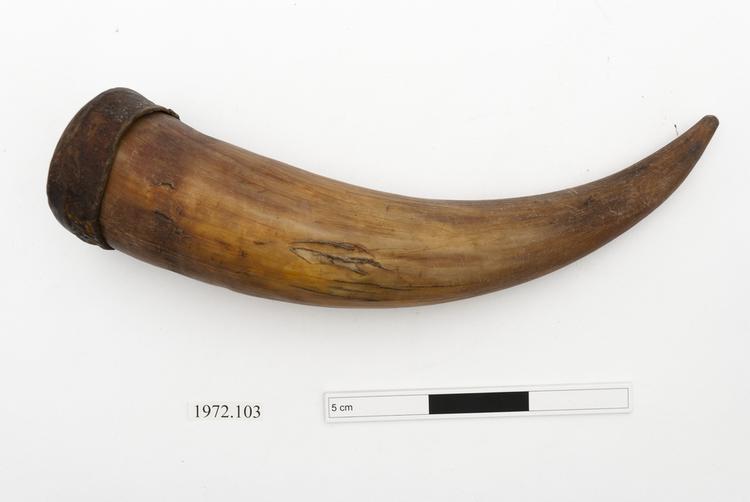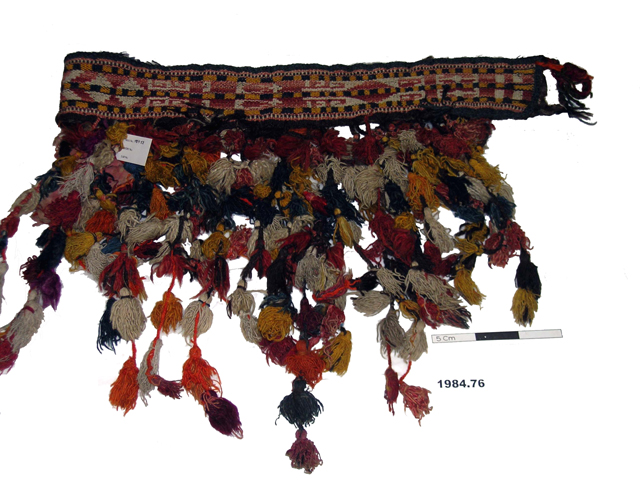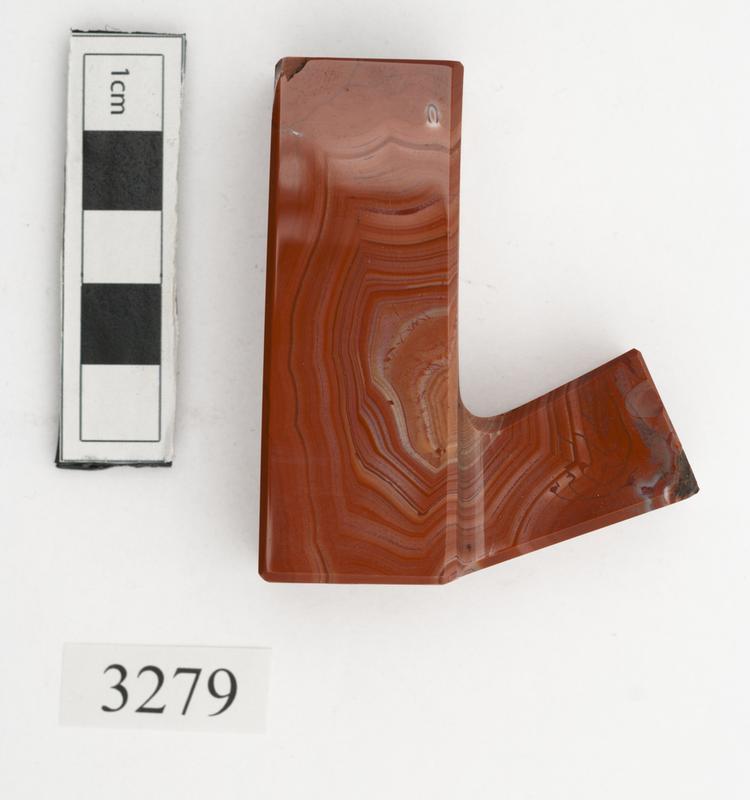

Composite spear with a reed shaft, wooden foreshaft, and flaked obsidian blade. The upper shaft and foreshaft are covered in Parinarium gum, which has been painted black, red, and white in bands and chequers. The fibre binding at the top of the shaft has been ornamented with seed beads of Coix lacryma.
Obsidian-Bladed Spear, Manus Province, Papua New Guinea. The Admiralty Islanders of Manus Province in northern Papua New Guinea traditionally manufactured few weapons, but their throwing spears and daggers of obsidian were produced with great technical skill and artistic refinement, as this fine spear illustrates. This is a composite spear with a reed shaft, a carved wooden foreshaft, and a large flaked obsidian (black volcanic glass) blade. The upper shaft and foreshaft are unified by a covering of putty-nut paste (Parinarium laurinum), which has been overpainted with black, red and white mineral paints in an attractive geometric pattern. Finally, the fibre binding at the top of the shaft has been ornamented with beads of Job’s Tears seeds (Coix lacryma). The people of Manus sourced their obsidian from local deposits on southwestern Manus island and Lou, and this material became an important export commodity for the islanders, who traded it in its raw form with New Guinea mainlanders, and as decorated weapons with Western ships. Such objects became mass produced souvenirs from the early 20th century onwards, but this meant that the artistry deteriorated while the weapons themselves became more gaudy and showy. This example here is a fine late 19th-Century example of the kind of weapons practically used by Admiralty Islanders in battle. Obsidian, wood, bamboo, Parinarium gum, vegetable fibre, seeds, mineral pigments. Late 19th Century. Formerly in the private collection of Mr. W.D. Webster.
fighting






